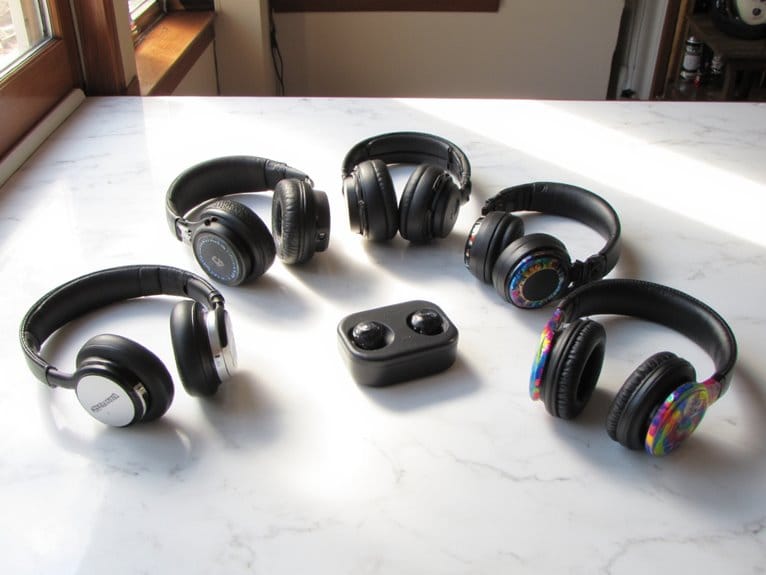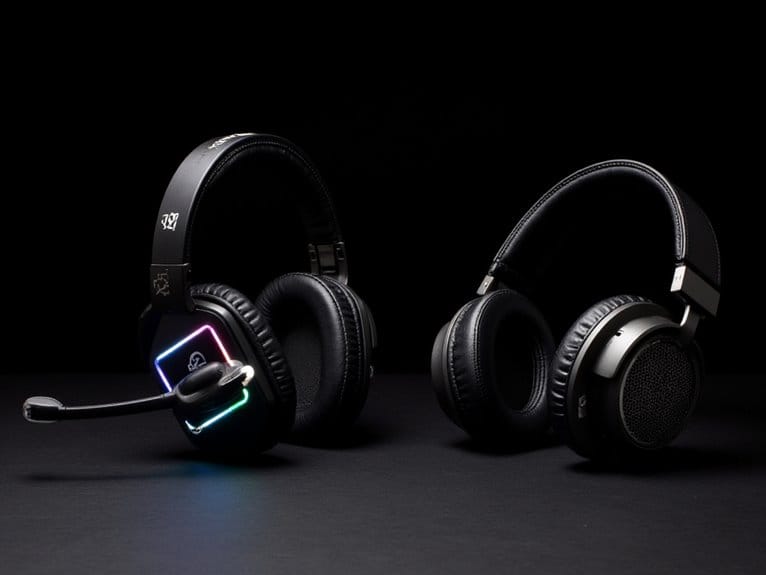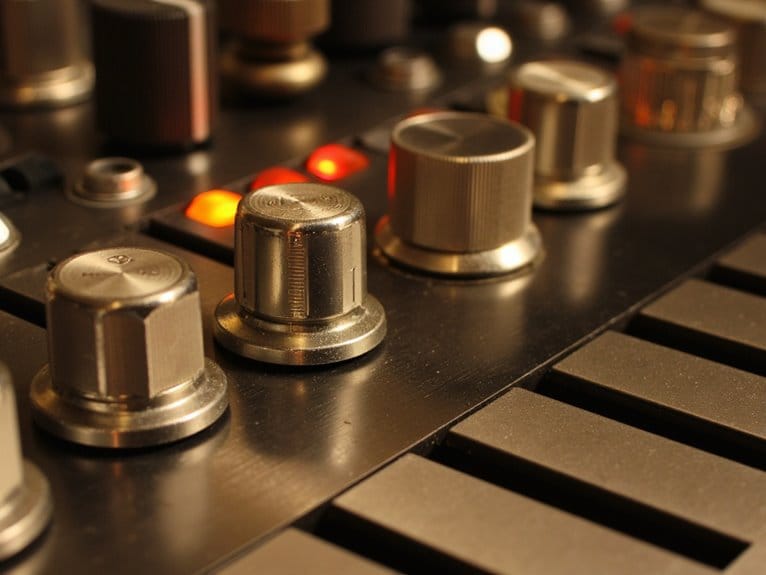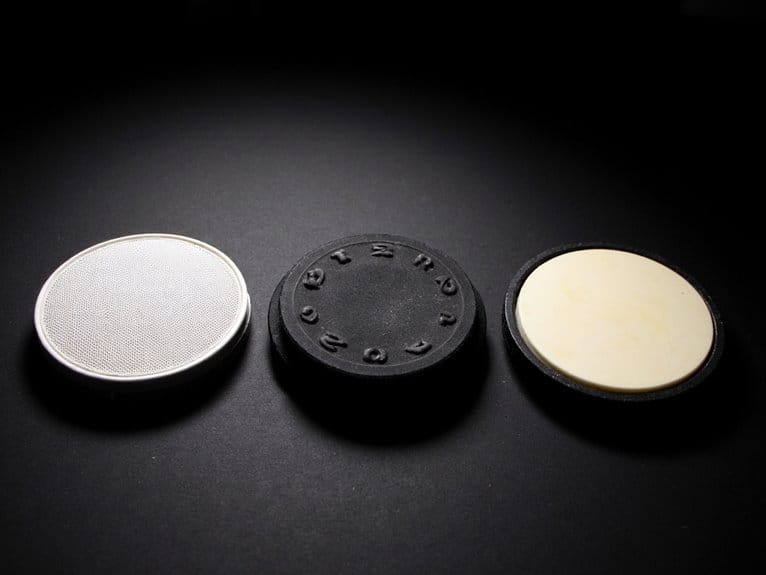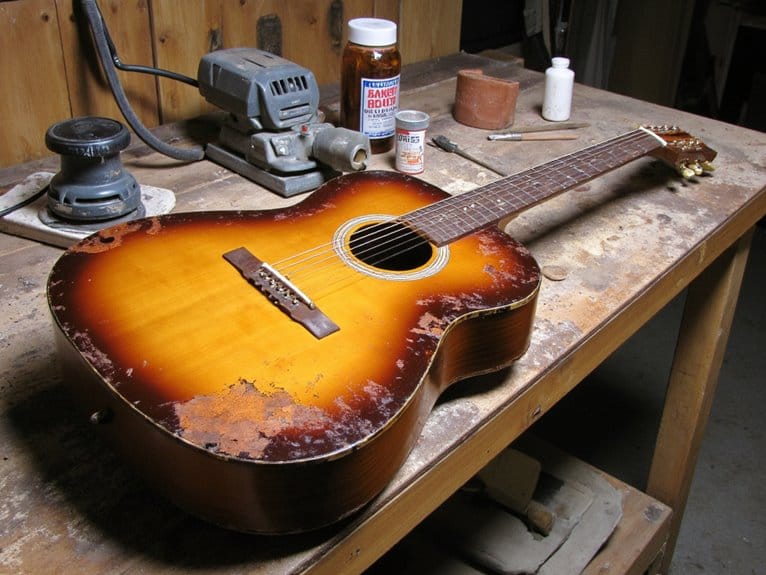How to Choose the Right Headphones for Your Needs
You’ll need to match your headphones to your actual usage scenarios, whether that’s over-ear models with cushioned cups for long listening sessions, noise-cancelling options for commuting, or true wireless earbuds for active lifestyles. Consider comfort factors like breathable earpads and adjustable headbands, especially if you’ll wear them for extended periods, while evaluating whether wired reliability or wireless convenience better suits your needs. Understanding these fundamentals will guide you toward the best choice for your specific requirements.
We are supported by our audience. When you purchase through links on our site, we may earn an affiliate commission, at no extra cost for you. Learn more.
Notable Insights
- Consider your primary usage scenario – commuting requires noise cancellation while gaming needs environmental awareness and clear microphones.
- Prioritize comfort features like breathable earpads, adjustable headbands, and proper weight distribution for extended listening sessions.
- Choose between wired for superior sound quality and zero latency versus wireless for convenience and active lifestyle compatibility.
- Match your budget to needs – budget options under $100 for basics, mid-range $200-$400 for balanced features.
- Evaluate sound quality through frequency response characteristics and supported audio codecs for your preferred music genres.
Understanding Headphone Types and Their Applications
The world of headphones presents a bewildering array of choices, from massive over-ear models that could double as earmuffs to tiny earbuds that disappear into your pocket.
I’ve learned through years of testing that understanding the fundamental differences between headphone types can save you from buyer’s remorse and countless hours of second-guessing your purchase.
Over ear advantages include exceptional comfort through cushioned ear cups, immersive sound with rich bass, and substantial noise isolation that transforms your living room into a personal concert hall. Lightweight models under 0.5 pounds prevent strain during prolonged use, making them ideal for extended listening sessions with soft ear cushions that enhance overall comfort. Professional models often feature 50mm neodymium drivers that deliver exceptional frequency response spanning from 20 Hz to 40 kHz for superior audio fidelity.
Conversely, in ear benefits center on portability for commuting, strong noise isolation when properly fitted, and convenience for workouts, though you’ll sacrifice some audio quality due to smaller drivers compared to their bulkier counterparts. True wireless earbuds offer the ultimate freedom of movement, making them perfect for active users who want to eliminate cable tangles entirely. The roots of this technology trace back to Ernest Mercadier who created the first in-ear headphones in 1891, remarkably resembling the modern earbuds we use today.
Identifying Your Primary Use Case and Environment
Where you’ll actually use your headphones matters far more than most people realize, and I’ve watched countless friends struggle with expensive models that simply don’t match their daily routines.
Expensive headphones become costly mistakes when they don’t match how and where you actually use them daily.
Whether they’re trying to use massive studio monitors during their morning jog or attempting important work calls with bass-heavy gaming headsets that make their voice sound like they’re speaking from inside a tunnel.
Your usage scenarios determine everything from form factor to feature prioritization, since commuters need ANC for focus while gamers require ENC for clear communication.
Environmental considerations shape these decisions further-noisy cafes demand strong noise isolation, quiet offices prioritize comfort over cancellation, and outdoor activities require durability with stable connections.
I’ve learned that matching your headphones to your actual environment, rather than aspirational listening habits, prevents buyer’s remorse.
Over-ear headphones with closed-back designs achieve up to 85% ambient sound reduction, making them ideal for noisy environments where passive isolation matters as much as active features.
Modern active noise cancellation can reduce ambient sounds by 90-96%, making it particularly effective for frequent travelers and office workers who need to block out consistent background noise.
Evaluating Sound Quality and Audio Performance Features
Now that you’ve identified your primary use case, you’ll need to evaluate the technical aspects that directly impact what you hear, starting with frequency response characteristics that determine how accurately your headphones reproduce bass, mids, and treble across the 20 Hz to 20 kHz spectrum.
The choice between open and closed designs affects not only sound isolation but also soundstage width, with open-back models typically offering more spacious audio at the cost of privacy.
Additionally, if you’re using wireless headphones, the supported audio codecs like aptX, LDAC, or AAC can greatly influence the quality of transmitted audio, though I’ll admit this technical rabbit hole can get overwhelming quickly.
For professional applications, consider the impedance levels of your headphones, as higher impedance models like 250-ohm studio headphones typically require dedicated audio equipment but offer superior performance in professional studio environments. Additionally, it’s important to match the impedance with your audio interface or mixer to ensure optimal sound quality. The best headphones for studio recording will not only provide clarity and detail but also allow for comfortable long-term use during extended sessions. Don’t forget to consider factors such as frequency response and comfort when selecting the ideal model for your specific needs. Understanding the role of a headphone amplifier is crucial, as a high-quality unit can significantly enhance the performance of your headphones, especially those with higher impedance. To ensure you get the best sound experience, a headphone amplifier explained can provide insights into how these devices boost audio signals, improving clarity and dynamics. Ultimately, investing in both the right headphones and the appropriate amplifier can make a noticeable difference in your overall listening experience.
Frequency Response Characteristics
When evaluating headphones, I’ve found that frequency response characteristics serve as one of the most essential yet misunderstood specifications, as they determine how accurately your headphones will reproduce the bass, midrange, and treble frequencies that make up your favorite music.
You’ll want to examine frequency response curves, which visually display how your headphones handle different frequencies across the audible spectrum from 20Hz to 20kHz. Look for measured deviations within ±3 dB from a flat response for balanced sound reproduction, though slight bass emphasis around 40Hz to 500Hz actually compensates for the lack of physical impact you’d feel from speakers.
Remember that extreme frequency emphasis can create fatiguing listening experiences, so controlled deviations indicate better overall tonal balance.
Open Vs Closed Design
While frequency response tells you what frequencies your headphones can reproduce, the fundamental choice between open-back and closed-back designs will dramatically affect how those frequencies reach your ears, influencing everything from soundstage width to bass impact.
Open-back headphones feature grilled ear cups that allow air movement, creating wider soundstages and more natural audio reproduction, though they suffer from significant sound leakage that’ll annoy nearby listeners.
Closed-back models use fully enclosed cups that trap sound inside, delivering punchier bass and excellent isolation from environmental noise, making them ideal for public use.
If you’re listening at home in quiet spaces, open-backs offer superior sound quality, but closed-backs excel when you need privacy or must block external distractions.
Audio Codec Support
How can tiny data packets traveling through the air possibly deliver the same audio fidelity as a wired connection? The secret lies in audio codecs, which compress and decompress your music while maintaining quality during wireless transmission.
Codec compatibility determines whether your headphones can access their full potential with your specific devices. While SBC provides universal baseline support at 320 kbps, advanced codecs like LDAC push boundaries with 990 kbps bitrates and 24-bit depth for audiophile-grade performance.
Consider these codec factors when evaluating headphones:
- Device ecosystem alignment – AAC excels with Apple devices, while LDAC dominates Android environments.
- Bitrate capabilities – Higher bitrates like aptX HD’s 576 kbps deliver noticeably richer soundscapes.
- Latency requirements – Gaming and video demand low-latency codecs like aptX Adaptive.
Your audio quality depends heavily on matching codec support between headphones and source devices.
Assessing Comfort and Build Quality Requirements
When I’ve tested dozens of headphones over the years, I’ve learned that even the best audio performance becomes meaningless if you can’t wear the headphones comfortably for hours. This is why evaluating extended wear comfort should rank equally with sound quality in your decision-making process.
You’ll want to examine durable build materials like reinforced hinges, quality plastics, and robust cable connections, since cheaper construction often leads to premature failures that’ll leave you shopping for replacements within months rather than years.
The adjustable fit features, including headband extension ranges, swiveling ear cups, and customizable clamping pressure, determine whether your headphones will accommodate your specific head shape and size while maintaining consistent comfort during those marathon listening sessions.
Extended Wear Comfort
The marathon headphone session-whether you’re deep in a work project, lost in your favorite album, or grinding through an all-night gaming session-separates truly comfortable headphones from the ones that’ll have you reaching for the ibuprofen.
Extended wear comfort depends on how well your headphones distribute weight across your head, with proper earcup shape being essential for avoiding those dreaded pressure points that develop after hour three.
Key comfort factors for extended sessions include:
- Breathable earpads with velour or protein leather materials that prevent heat buildup
- Adjustable headbands that distribute weight evenly without creating pressure spots
- Deep earcup design that doesn’t compress your ears against internal drivers
Proper pressure distribution matters more than you’d think-headphones that feel fine initially can become torture devices during longer sessions without thoughtful engineering.
Durable Build Materials
Most headphones won’t survive the real-world gauntlet of daily drops, bag tosses, and that inevitable moment when you accidentally roll your chair over the cable, which is why understanding build materials becomes essential for anyone seeking a long-term audio investment.
When conducting a build material comparison, you’ll find metal components in headbands and ear cup forks provide superior longevity compared to plastic-only construction, though they add weight that might strain your neck during marathon listening sessions.
Quality plastics with metal reinforcement offer the sweet spot between durability and comfort, while replaceable ear pads greatly extend lifespan regardless of frame materials.
Check durability ratings from long-term users who’ve actually tested these headphones beyond the honeymoon period.
Adjustable Fit Features
Beyond selecting materials that’ll withstand your daily abuse, you’ll discover that even the most indestructible headphones become useless torture devices without proper adjustable fit features, which separate comfortable all-day companions from expensive paperweights that’ll collect dust after one painful listening session.
Smart headphone adjustments include sliding headbands, swiveling earcups, and flexible frame construction that contours to your unique head shape without creating pressure points.
I’ve learned that quality padding materials like memory foam and breathable fabrics make the difference between three-hour gaming marathons and thirty-minute endurance tests.
Effective fit customization features you should prioritize:
- Telescoping headbands with precise adjustment mechanisms for secure positioning
- Pivoting earcups that conform naturally to your head’s contours
- Replaceable cushioning allowing long-term comfort maintenance
Proper adjustment prevents clamping force issues while accommodating glasses, different hairstyles, and extended wear requirements.
Choosing Between Wired and Wireless Connectivity Options
When you’re weighing the choice between wired and wireless headphones, you’ll find yourself steering a decision that fundamentally shapes your entire listening experience, from the pristine clarity of your favorite tracks to the practical realities of daily use.
Wired advantages center on superior sound quality through direct analog transmission, eliminating audio compression that plagues Bluetooth connections. You’ll also benefit from zero latency, making them ideal for gaming and video content where timing matters.
Wired headphones deliver uncompressed audio and instant response, making them essential for audiophiles who demand precise sound reproduction.
Wireless limitations include battery dependence, potential connectivity issues, and compressed audio quality. However, wireless models offer unmatched convenience for active lifestyles.
Consider your primary use case: professionals and audiophiles gravitate toward wired options for reliability, while casual listeners appreciate wireless freedom.
Frequently Asked Questions
How Often Should I Replace My Headphones?
You should replace headphones based on performance rather than set schedules. Typical headphone lifespan ranges from 2-7 years depending on quality. Watch for signs replacement’s needed: declining audio quality, connectivity issues, or physical wear.
How Do I Properly Clean and Maintain My Headphones?
You’ll want proper cleaning techniques like using damp cloths with mild soap and rubbing alcohol for disinfection. Essential maintenance tips include storing headphones safely, inspecting cables regularly, and allowing complete drying before use.
On a final note
You’ve got the knowledge to make an informed headphone decision now. Remember, there’s no universally perfect choice-only what’s right for your specific needs, budget, and listening habits. Don’t overthink it; trust your priorities and test models when possible. Whether you’re choosing $50 earbuds or $500 studio monitors, focus on how they’ll actually fit into your daily routine rather than chasing specs you’ll never notice.

